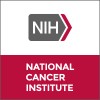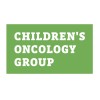
Ofatumumab & Ibrutinib + Allogeneic Bone Marrow Transplant or Consolidation in High Risk Chronic...
LeukemiaLymphoblastic1 moreA clinical study to evaluate a treatment with two drugs, named Ofatumumab and Ibrutinib, in patients with lymphoblastic acute leukemia who have been already treated with other therapies.

Testing Nivolumab to Prevent Disease From Coming Back After Treatment in Patients With Acute Myeloid...
Acute Myeloid LeukemiaThis phase II trial studies how well nivolumab works in eliminating any remaining cancer cells and preventing cancer from returning in patients with acute myeloid leukemia that had a decrease in or disappearance of signs and symptoms of cancer after receiving chemotherapy. Immunotherapy with monoclonal antibodies, such as nivolumab, may help the body's immune system attack the cancer, and may interfere with the ability of tumor cells to grow and spread.

Selective Depletion of CD45RA+ T Cells From Allogeneic Peripheral Blood Stem Cell Grafts From HLA-Matched...
Accelerated Phase Chronic Myelogenous LeukemiaBCR-ABL1 Positive24 moreThis phase II trial is for patients with acute lymphocytic leukemia, acute myeloid leukemia, myelodysplastic syndrome or chronic myeloid leukemia who have been referred for a peripheral blood stem cell transplantation to treat their cancer. In these transplants, chemotherapy and total-body radiotherapy ('conditioning') are used to kill residual leukemia cells and the patient's normal blood cells, especially immune cells that could reject the donor cells. Following the chemo/radiotherapy, blood stem cells from the donor are infused. These stem cells will grow and eventually replace the patient's original blood system, including red cells that carry oxygen to our tissues, platelets that stop bleeding from damaged vessels, and multiple types of immune-system white blood cells that fight infections. Mature donor immune cells, especially a type of immune cell called T lymphocytes (or T cells) are transferred along with these blood-forming stem cells. T cells are a major part of the curative power of transplantation because they can attack leukemia cells that have survived the chemo/radiation therapy and also help to fight infections after transplantation. However, donor T cells can also attack a patient's healthy tissues in an often-dangerous condition known as Graft-Versus-Host-Disease (GVHD). Drugs that suppress immune cells are used to decrease the severity of GVHD; however, they are incompletely effective and prolonged immunosuppression used to prevent and treat GVHD significantly increases the risk of serious infections. Removing all donor T cells from the transplant graft can prevent GVHD, but doing so also profoundly delays infection-fighting immune reconstitution and eliminates the possibility that donor immune cells will kill residual leukemia cells. Work in animal models found that depleting a type of T cell, called naïve T cells or T cells that have never responded to an infection, can diminish GVHD while at least in part preserving some of the benefits of donor T cells including resistance to infection and the ability to kill leukemia cells. This clinical trial studies how well the selective removal of naïve T cells works in preventing GVHD after peripheral blood stem cell transplants. This study will include patients conditioned with high or medium intensity chemo/radiotherapy who can receive donor grafts from related or unrelated donors.

Rituximab and Bendamustine Hydrochloride, Rituximab and Ibrutinib, or Ibrutinib Alone in Treating...
Stage I Chronic Lymphocytic LeukemiaStage II Chronic Lymphocytic Leukemia2 moreThis randomized phase III trial studies rituximab with bendamustine hydrochloride or ibrutinib to see how well they work compared to ibrutinib alone in treating older patients with previously untreated chronic lymphocytic leukemia. Monoclonal antibodies, such as rituximab, may block cancer growth in different ways by targeting certain cells. Drugs used in chemotherapy, such as bendamustine hydrochloride, work in different ways to stop the growth of cancer cells, either by killing the cells, by stopping them from dividing, or by stopping them from spreading. Ibrutinib may stop the growth of cancer cells by blocking some of the enzymes needed for cell growth. It is not yet known whether rituximab with bendamustine hydrochloride may work better than rituximab and ibrutinib or ibrutinib alone in treating chronic lymphocytic leukemia.

Sirolimus and Azacitidine in Treating Patients With High Risk Myelodysplastic Syndrome or Acute...
Adult Acute Myeloid Leukemia With 11q23 (MLL) AbnormalitiesAdult Acute Myeloid Leukemia With Del(5q)8 moreThis phase II trial studies how well sirolimus and azacitidine works in treating patients with high-risk myelodysplastic syndrome or recurrent acute myeloid leukemia. Sirolimus may stop the growth of cancer cells by blocking some of the enzymes needed for cell growth. Drugs used in chemotherapy, such as azacitidine, work in different ways to stop the growth of cancer cells, either by killing the cells or by stopping them from dividing. Sirolimus and azacitidine may kill more cancer cells.

Clofarabine or High-Dose Cytarabine and Pegaspargase in Children With ALL
LeukemiaRATIONALE: Drugs used in chemotherapy work in different ways to stop the growth of cancer cells, either by killing the cells or by stopping them from dividing. Giving more than once drug (combination chemotherapy) may kill more cancer cells. Radiation therapy uses high-energy x-rays to kill cancer cells. It is not yet known whether giving clofarabine or high-dose cytarabine, pegaspargase, and combination chemotherapy followed by daunorubicin hydrochloride or doxorubicin hydrochloride is more effective in treating young patients with acute lymphoblastic leukemia. PURPOSE: This randomized phase II/III trial is studying the side effects of giving clofarabine compared with giving high-dose cytarabine, pegaspargase, and combination chemotherapy followed by daunorubicin hydrochloride or doxorubicin hydrochloride and to see how well it works in treating young patients with T-cell acute lymphoblastic leukemia or precursor B-cell acute lymphoblastic leukemia.

Phase II Trial of LMB-2, Fludarabine and Cyclophosphamide for Adult T-Cell Leukemia
Adult T-Cell Leukemia (ATL)BACKGROUND: Cluster of differentiation 25 (CD25) (p55, Tac or interleukin 2 receptor (IL2R) alpha) is strongly expressed in virtually 100% of patients with adult T-cell leukemia/lymphoma (ATL), a highly aggressive human T-lymphotropic virus type 1 (HTLV-1) related malignancy responding poorly to chemotherapy. In ATL, the humanized anti-CD25 monoclonal antibody (Mab) daclizumab produced 13-14% responses, and the anti-CD52 Mab Alemtuzumab (Campath-1H) produced response lasting greater than 2 months in 30% of 23 patients. LMB-2 is an anti-CD25 recombinant immunotoxin containing variable domains of murine MAb anti-Tac and truncated Pseudomonas exotoxin. In a phase I trial at National Cancer Institute (NCI), the maximum tolerated dose (MTD) of LMB-2 was 40 microg/Kg intravenous (IV) given every other day for 3 doses (every other day (QOD) times 3). LMB-2 induced greater than 90% tumor reduction rapidly in all 3 ATL patients on protocol, but achieved only 1 partial response due to rapid tumor progression and/or immunogenicity. In preclinical models, response from recombinant immunotoxins is limited by high concentrations of soluble receptor in the blood and especially in the interstitial space of the tumor. Synergism was observed with chemotherapy and immunotoxins, possibly due to reduction of soluble receptor in tumor interstitium. OBJECTIVES: -To determine, in nonrandomized fashion, if after verifying its safety, fludarabine and cyclophosphamide (FC) prior to LMB2 for ATL can result in low immunogenicity and a rate of major response lasting greater than 2 months, which may be an improvement over that demonstrated previously from Alemtuzumab (CAMPATH). Secondary objectives: To determine the effect of 1 cycle of FC alone in ATL. To examine progression-free and overall survival in ATL after FC/LMB-2. Evaluate pharmacokinetics, toxicity, and monitor soluble CD25 and other tumor marker levels in the serum. To study the effects of LMB-2 plus FC on normal B- and T-cell subsets by fluorescence-activated cell sorting (FACS). ELIGIBILITY: CD25 plus ATL, untreated or with prior therapy Eastern Cooperative Oncology Group (ECOG) 0-2, absolute neutrophil count (ANC), platelets and albumin at least 1000, 75,000, and 3.0. DESIGN: Fludarabine 25 mg/m(2) IV days 1-3 Cyclophosphamide 250 mg/m(2) IV days 1-3 LMB-2 30-40 micro g/Kg IV days 3, 5 and 7. LMB-2 dose: Begin with 30 microg/Kg times 3. Escalate to 40 microg/Kg if dose limiting toxicity (DLT) in 0/3 or 1/6 at 30 microg/Kg. Continue at 40 microg/Kg if 0-1 of 6 have DLT at 40 microg/Kg. Administer cycle 1 with FC alone. Two weeks after starting cycle 1, begin up to 6 cycles of FC plus LMB-2 at minimum 20-day intervals. Accrual goals: 29-37 patients, which includes 4 replacements....

Busulfan, Etoposide, and Total-Body Irradiation in Treating Patients Undergoing Donor Stem Cell...
LeukemiaMyelodysplastic SyndromesRATIONALE: Giving chemotherapy and total-body irradiation before a donor stem cell transplant or a donor bone marrow transplant helps stop the growth of cancer and abnormal cells and helps stop the patient's immune system from rejecting the donor's stem cells. When the healthy stem cells from a donor are infused into the patient they may help the patient's bone marrow make stem cells, red blood cells, white blood cells, and platelets. Sometimes the transplanted cells from a donor can make an immune response against the body's normal cells. Giving mycophenolate mofetil and cyclosporine before and after transplant may stop this from happening. PURPOSE: This phase II trial is studying the side effects and best way to give busulfan together with etoposide and total-body irradiation and to see how well they work in treating patients who are undergoing a donor stem cell or bone marrow transplant for advanced hematologic cancer.

Combination Chemotherapy With or Without Lestaurtinib in Treating Younger Patients With Newly Diagnosed...
Acute Lymphoblastic LeukemiaAcute Undifferentiated Leukemia1 moreThis phase III trial studies combination chemotherapy with or without lestaurtinib with to see how well they work in treating younger patients with newly diagnosed acute lymphoblastic leukemia. Drugs used in chemotherapy work in different ways to stop the growth of stop cancer cells, either by killing the cells, by stopping them from dividing, or by stopping them from spreading. Lestaurtinib may stop the growth of cancer cells by blocking some of the enzymes needed for cell growth. It is not yet known whether combination chemotherapy is more effective with or without lestaurtinib in treating acute lymphoblastic leukemia.

Veliparib and Topotecan With or Without Carboplatin in Treating Patients With Relapsed or Refractory...
Adult Acute Megakaryoblastic LeukemiaAdult Acute Monoblastic Leukemia23 moreThis phase I trial is studying the side effects and best dose of veliparib when given together with topotecan hydrochloride with or without carboplatin in treating patients with relapsed or refractory acute leukemia, high-risk myelodysplasia, or aggressive myeloproliferative disorders. Veliparib may stop the growth of cancer cells by blocking some of the enzymes needed for cell growth. Drugs used in chemotherapy, such as topotecan hydrochloride and carboplatin, work in different ways to stop the growth of cancer cells, either by killing the cells or by stopping them from dividing. Giving veliparib together with topotecan hydrochloride and carboplatin may kill more cancer cells.
